This weekend the Angoulême International Comic Art Festival (FIBD) marks fifty years of existence. What began as a small Franco-Belgian affair has ballooned into a world-renowned, much spoken about event that celebrates and promotes comics from across the globe – all taking over a medieval French town.
To celebrate this anniversary year, the Beat drew up a survey and asked professionals in the comics space – creators, publishers, journalists and more – to think back to how they may have first heard about the festival, when their first visit was, and their other memories over the years.
39 people responded from many different countries -although a solid chunk are UK or US – with numbers of visits ranging from one to nearly forty(!!).
For convenience we have alphabetically sorted our thirty-nine respondents and placed them into categories: Comics Creators; those that have only attended once (One-Timers); those who have attended upwards of 15 times or more (Long-Timers); Journalists & Scholars; and Publishers.
Scroll down to read the stories and memories – and if you are feeling that nerdy itch, there is a stat breakdown of our responses.
Enjoy!
Basic Breakdown of Survey Responses
| INTERNATIONAL SPREAD OF SURVEYS | ||
| Declared Countries of Respondents | # | Note |
| UK | 12 | |
| US | 11 | includes Brit based in US |
| France | 4 | including an Argentinian based in France |
| Australia | 2 | |
| Canada | 2 | including dual US/Canadian citizen |
| Israel | 2 | |
| Belgium | 1 | Canadian based in Belgium |
| Cameroon | 1 | |
| Netherlands | 1 | |
| Portugal | 1 | |
| Singapore | 1 | |
| Sweden | 1 | |
| Total | 39 | |
“Other” included a national promoter of Swedish comics, Columbia University’s Comics Librarian Karen Green, two comics festival directors (Australia and Congo via Cameroon), a Dutch comics scholar, and international comics activist Paul Gravett.
COMICS CREATORS: Cartoonists, Writers and Artists [14 People]
CHARLIE ADLARD (Artist, British, more than ten times “For a while, pre-pandemic, I attended regularly every year”)
How and when did you first learn about Angoulême? From some mutual comic fans/friends. That was in the early nineties.
When was your first visit and what was the experience like? 1994 [I think]. It blew my mind! I never dreamed of a festival like it.
How does Angoulême compare to your other experiences of comics-oriented events – both in your home country and overseas? It’s TOTALLY immersive. Takes over a whole town… it’s everywhere! And, what other show [outside of Japan] can say it attracts over a 100,000 people to JUST comics? And predominantly Bande Dessinée too. Surely it’s the best show in the world…?
Tell us about your fondest memory of Angoulême FIBD, when did it take place? The early years wandering around as a fan with my friends… Meeting Baru… The year I was a guest of the show itself… The brilliant treatment I have off my publishers there every year… Things too numerous to mention!
From your perspective, how has the festival changed since you started attending? It hasn’t changed that much, to be honest. It seems as crowded now as it was back in the early 90s. The layout of the town itself has changed a bit over the years, which forced the festival to adapt – but it adapted well. Unfortunately, now I’m there as a pro, I don’t get the time to wander around myself as much, so sometimes it’s hard to judge these things.
The friends I used to go with are coming back this year too – so it’ll be interesting to see what they think after a prolonged absence.
Any additional comments: If you love comics – you’ll LOVE this festival.
DERF BACKDERF (Cartoonist, US, 7 times pre-pandemic “Covid broke my string.”)

How and when did you first learn about Angoulême? I probably first heard of it from my French publisher. “We’ll bring you over for our big festival.” I had no idea what the reality of Angouleme was. I expected it would be unlike anything I’d experienced at a US con, but my mind was still blown.
When was your first visit and what was the experience like? 2013. I’d already made my debut book tour in France in the previous Fall, so I knew a little about what to expect from fans here, but nothing really prepares you for Angouleme. The entire city very cleverly becomes one big comic con! They don’t have a big convention center here, so 20 temporary buildings wind through the narrow streets. Every venue in town– museums, churches, whatever– that can be converted to comics, is. The crowds are huge, but spread out over the city, so you never feel overwhelmed like you do at, say, New York Comic Con. And there’s much less of a corporate presence. No Disney Inc.! No Hall H. No investor-collectors running around to get Rob Liefeld to sign the CGC case of their copy of X-force. Not much cosplay either. Angouleme is all about reading and appreciating comics. And the coverage of the fest in French media is a stark contrast to the US, where media focuses on the latest MCU announcement, and no one gives the slightest crap about comics. Over here, there’s scant mention of film or tv. It’s comics, comics, comics!
How does Angoulême compare to your other experiences of comics-oriented events – both in your home country and overseas? I’ve been to a few other fests here in Europe. All the French ones are great. They really know how to put on a comics fest here. The ones at home like SPX or CXC are comparable on a much smaller scale, except authors aren’t taken care of and feted the way they are at Angouleme. Creators pay for nothing. Travel and lodging are taken care of. Every meal is paid for. The French government subsidizes the fest itself, which will NEVER happen in the US. It’s first class the whole way. I go into the media room to use the free internet during breaks. It’s this grand baroque room in the city hall; high ceilings, beautiful wall carvings. They pass out free glasses of cognac! Can you imagine this at a US con?
Tell us about your fondest memory of Angoulême FIBD, when did it take place? At my first Angouleme, I won a prize for My Friend Dahmer. Nothing will top that.
The awards ceremony is incredible. The theater is packed. Standing room only. And it’s a big production, with a celebrity host, and a band, and a sketches!
But it’s all in French, of course, and after an exhausting four days of signings and panels and interviews and, of course, eating and drinking late into the night, I was running on fumes. The chairs were soft, and I dozed off. Suddenly my publisher is elbowing me, “Derf! You won!”
I groggily ascended the steps to the stage, careful not to trip and faceplant in my big moment (a fate that would have been completely in character for me). I croaked out a thank you and they handed me my Louis Trondheim cat. Then I was pushed off stage right to a pack of reporters who peppered me with questions.
After all the awards were passed out, they herded all the winners to the stage in a group. The audience is roaring. There were about 50 news photogs in front snapping pictures. Flashes firing. I spotted Ted Stearn on the other side, the only other American who won a prize that year, for Fuzz & Puck. We pointed at each other with big smiles. We lost Ted a few years ago. I always think of him when I recount this memory.
I stood there blinking at the flashes, taking it all in, and thought, “Where the hell AM I?”
Another favorite memory, from a fanboy perspective. The last fest before the Covid plague broke my attendance string, there was an incredible Wally Wood exhibition. Mindblowing. Hundreds of originals, classics from his EC days right up to his tragic last days.
As I was wandering through, I rounded a corner and came face to face with a splash page from Astonishing Tales #1 from 1970, a Dr. Doom story. This was when Marvel reintroduced their split-feature books, Amazing Adventures was the other, that had worked so well for them in the Silver Age. The titles didn’t work the 2nd time, although that debut year is full of gems, and Wally’s brief Dr. Doom run is that the top of that list. It’s a beautiful page. It’s not particulrly important in Wood’s oeuvre… except to me.
Astonishing Tales #1 was one of the very first comic books I purchased as a kid! I bought a stack of them to alleviate the boredom on a family vacation that summer. I fell in love with comics on that vacation, and was lost forever. And here I’m unexpectedly confronted with the original art from a book that triggered my lifelong obsession with comics. I almost burst into tears!
That experience, to me, is what Angouleme is all about.
From your perspective, how has the festival changed since you started attending? Not really.
DIOGO CAMPOS (Writer, Portugal, 2-5 times)
How and when did you first learn about Angoulême? I don’t remember exactly where I learned about Angouleme. It was constantly mentioned as being one of the best and greatest comics events in Europe and the world. I saw many friends and artists I know going there every year and sharing books and authors they found there. The idea to go stuck with me for years until I had the opportunity to join a group that was going.
When was your first visit and what was the experience like? 2014 – it was amazing. When I arrived in the city, I immediately passed by Pat Mills which I thought was a good omen when it comes to meeting authors. On the other days I met so many authors, some of them I already knew, others were introduced to me by friends. But it was also a bit overwhelming. The whole city felt crowded, everywhere one goes there’s a crowd or lines.
Since I wasn’t focusing on getting autographs from authors working mainly on the French-Belgian market, the lines were smooth. I found out that the public isn’t much interested in meeting authors working for the US or UK market or authors from other nationalities which made me not waste much time in lines.
I don’t know French so I ignored most of the new publications and publishers but was able to find a lot of small publishers from other countries. I remember Taiwan had a delegation promoting their authors and works which was a surprise because they were offering samples from books and I managed to learn a lot [about] the local comics scene.
How does Angoulême compare to your other experiences of comics-oriented events – both in your home country and overseas? Angouleme didn’t feel like a comic con – the kind of event that is 100% commercial, doesn’t have art exhibitions, it’s focused on booths selling art, books and merchandise – but it was very similar to the comics festivals I usually attend in Portugal and Spain but bigger, way bigger than I imagined. The focus of these events is the art itself: exhibitions, panels, signings. You can see the commercial part is very important but it is not the sole focus.
In that regard, it was similar to what I knew but everything dialled up to the maximum.
Tell us about your fondest memory of Angoulême FIBD, when did it take place? The 1st time I attended, when I was stepping out of the car on the 1st day, I recognized Pat Mills which seemed to me like a good omen. It was because on the next few days I recognized so many artists on the streets, famous or upcoming. It felt a bit surreal rubbing shoulders with some giants who were hanging out in the same spots as we did.
The meals me and my group shared where we would sometimes invite artists from other countries which someone in the group knew.
From your perspective, how has the festival changed since you started attending? I’ve only attended 2 times. The changes I saw between the 2 editions were a slight decline on the quality and amount of exhibitions and the amount of small publishers and their variety. I don’t know if it was because the 1st time makes the most impression but on my 2nd visit, the variety of small publishers was way less than what I remembered and I didn’t bring as much new books as the 1st time.
KARRIE FRANSMAN (Cartoonist, UK – Scot based in London, 2-5 times)

How and when did you first learn about Angoulême? On Facebook probably. Maybe at a festival?
When was your first visit and what was the experience like? I think my first visit was with a group of comikers- we stayed 3 to the teeniest of rooms in a motel. The bunk bed was so close to the ceiling you couldn’t sit up and you could touch both sides of the room!
How does Angoulême compare to your other experiences of comics-oriented events – both in your home country and overseas? It’s definitely the one with the most £££. When you’re used to tiny UK based fares it’s fascinating and inspiring to see how big the medium can be when properly supported/appreciated. But it also sometimes lacks the intimacy/community/mom hierarchy of my favourite British fests.
Tell us about your fondest memory of Angoulême FIBD, when did it take place? Probably the first time I went to the creator’s tent and just looked down at miles and miles of amazing comics from all over the world. My little mind was blown! It was both inspiring and daunting.
From your perspective, how has the festival changed since you started attending? I was disappointed to see the festivals response to the dominance of white men winning their awards some years back.
Any additional comments: It would be great to see more of a consistent year-to-year partnership between Angoulême + the British comic scene. It’s still very much dependent on individual artists going in groups.
SIMON FRASER (Artist, Brit in US, 2-5 times):
How and when did you first learn about Angoulême? Back in the late 80s when I started reading about the French comics industry. That was the big one.
When was your first visit and what was the experience like? 1999, I think. My memory is foggy.
How does Angoulême compare to your other experiences of comics-oriented events – both in your home country and overseas? It’s a totally different experience from any other comics event. The whole town turns itself over to the celebration of the medium of comics. Everyone is involved, every shop puts comics in the window. There are murals and artwork everywhere. It’s joyous and overwhelming.
Tell us about your fondest memory of Angoulême FIBD, when did it take place? Every time I’ve gone I’ve stayed with the same family, The Lafonts, who rent out rooms in their house for the festival weekend. I’ve brought friends to stay there some years (Alex deCampi and Frazer Irving ) and I met a gang of Italian Artists who were also staying there one year and I spent the weekend translating for them and their Professor. I met a French girl called Gladys one year, who was an aspiring cartoonist and we spent the weekend talking about comics and our respective lives.
I went with a gang of UK cartoonists one year (Robbie Morrison (my Nikolai Dante collaborator), Charlie Adlard, Roger Langridge, Paul Peart, Brad Brooks et al ) we had a table and Jean Giraud ( Moebius ) walked past. It was like seeing Sinatra, in his prime, in Vegas. The room was electrified.
It’s always the people that leave the biggest impression.
From your perspective, how has the festival changed since you started attending? It’s certainly grown. I’ve not been in 14 years, but they rebuilt the town square to accommodate the festival better. The Musee National De Bande Dessinee just gets bigger and more impressive.
Any additional comments: The Comics Festival format has been copied in other towns (Thought Bubble and the Lakes Festival in the UK come to mind) but Angouleme is the daddy. It’s on a different scale. As a English speaker in the old days you would spend the whole weekend and see many hugely impressive and beautiful comics, none of which you would have seen before. It’s a mainstream French Arts Festival celebrating the comics medium. It makes you see the world of comics profoundly differently.
SIMON HANSELMANN (Cartoonist, US-based, 2-5 times):
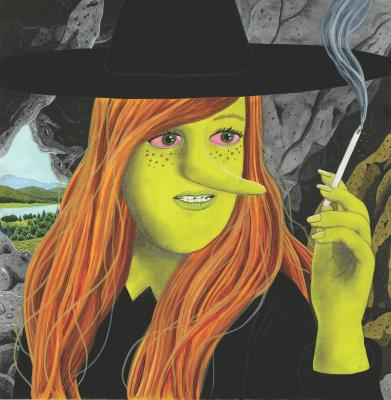
How and when did you first learn about Angoulême? Probably TCJ in the 2000s
When was your first visit and what was the experience like? 2015. It was batshit crazy. Got mega fucked up and had the best time ever. Europeans are more fun than Americans.
How does Angoulême compare to your other experiences of comics-oriented events – both in your home country and overseas? One of, if not the best comics festival in the world. Great variety of exhibitions and exhibitors.
Fondest memory of Angoulême FIBD, when did it take place? Winning the prize for best series in 2018. Lots of things I shouldn’t talk about…
From your perspective, how has the festival changed since you started attending? I haven’t been since the management changed again… so I couldn’t really say.
Any additional comments: I think I owe the festival money… come get me, motherfuckers!
GREGORY MACKAY (Cartoonist, Australia, 2-5)
How and when did you first learn about Angoulême? I am unsure.
When was your first visit and what was the experience like? 2017. It was an amazing visit as my book was in Official Selection.
How does Angoulême compare to your other experiences of comics-oriented events – both in your home country and overseas? There are bigger events, but none of them occur in a fortified medieval French town.
Tell us about your fondest memory of Angoulême FIBD, when did it take place? Signing books for hundreds of interested readers and seeing how important comics are to the French people. I stayed with my French friends and got to see how local cartoonists live.
From your perspective, how has the festival changed since you started attending? I have only been twice, but it appears to be more popular now. The competition is always controversial as well. The art exhibitions are another memorable thing about my visits.
Any additional comments: There are several layers to the festival. There is the mainstream publishers with large displays in the main tents, the independent and community publishers with their own areas and an interesting ‘outsider’ festival which occurs at the same time, which is worth looking out for.
JOËLLE EPÉE MANDENGUE (Cartoonist and Comics Festival Director, Cameroon, 2-5 times)
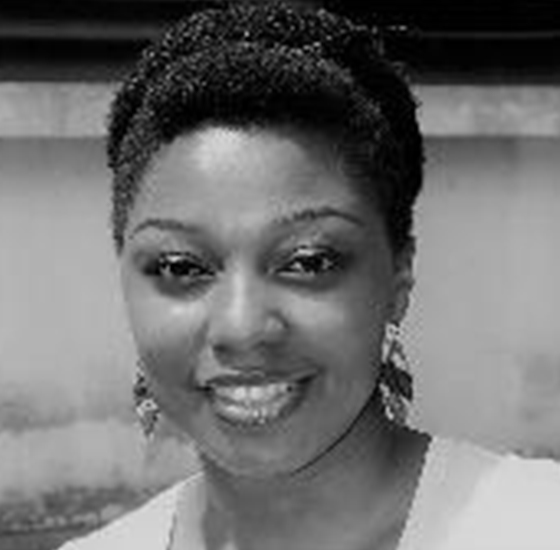
How and when did you first learn about Angoulême? When I was younger, Angoulême was described as the shrine of refuge and visibilité, a place of great opportunity for artists from all over the world. It was the place to go at least once in a lifetime, like going to Mecca. Angoulême was the real deal.
When was your first visit and what was the experience like? First visit was in 2011. It was like getting into a living fairy tale for me. All the town was turned into this giant place fully dedicated to comics. It was very impressive. I cherish that memory.
How does Angoulême compare to your other experiences of comics-oriented events – both in your home country and overseas? Angoulême is strategically unique due to the fact that it launches the year. And having the whole town turned into a comic book fair is impressive. The quality and quantity of activities too and the various school, museums etc all that contributes in setting a global standard that many festivals around the world cannot match.
Tell us about your fondest memory of Angoulême FIBD, when did it take place?
1- Signing my books for the first time was something great. I did it first in a bank, then in Gallery Lafayette. It was a one of kind experience
2- Having my work getting into the museum
3- Being programmed for conferences
4- Getting in touch with key profiles to boost the work I do overseas in Congo Brazzaville with my own festival.
From your perspective, how has the festival changed since you started attending? I don’t think the festival has changed that much… obviously things have evolved over the years but concerning comic books from Africa, we are still far from being represented properly. The festival does little-to-nothing about that. La Cité Internationale de la Bande Dessinée et de l’image on the other hand, has opened the discussion, survey and exchanges to have a better knowledge about comics from the continent.
It is mostly my perspective that has also evolved from the sparkles in the eyes into one goal: finding ways to draw attention on what is being done in countries from Africa.
STUART MEDLEY (Cartoonist and Chair of Perth Comic Arts Festival (PCAF), Australia, 2-5)
How and when did you first learn about Angoulême? TV. A travel show, from memory.
When was your first visit and what was the experience like? 2012. I took Australian illustration students there on a study tour. The experience was brilliant. I was in awe of the breadth and depth of comics being celebrated, and of how big the festival was. The museum and the cité were an absolute revelation.
How does Angoulême compare to your other experiences of comics-oriented events – both in your home country and overseas? Its scale is head and shoulders above others I’ve been to or been involved with organising. The setting is a further delight. The comics focus was a real plus to me on my first visit, as the Australian cons I had attended were more ‘pop-culture’ than a pure comics focus. It’s that experience, and the experience of being a guest at LICAF in the UK that led the PCAF team to make our festival all about comics (rather than spin-off TV, merch, etc.)
Tell us about your fondest memory of Angoulême FIBD, when did it take place? I was in residence at the Maison des Auteurs, Angoulême, in the winter of 2013-14 at the same time as Lucas Varela, Jessica Abel, Matt Madden and Anneli Furmak among other super comics talents. That was wonderful and culminated in inclusion in a group exhibition (“ancrages”) at the 2014 festival.
From your perspective, how has the festival changed since you started attending? Between 2012 and 2019 I attended Angoulême 5 times. It grew noticeably though it was already huge. There were some serious controversies between those years (and again this time!). The inclusivity aspects seem to be improving slowly, slowly.
PAT MILLS (Writer and founding editor of 2000 AD, UK, 2-5 times)

How and when did you first learn about Angoulême? Through 2000 AD. For a publicity drive there.
When was your first visit and what was the experience like? There was a British introduction to Angouleme with a whole group of us attending. It was good. Everyone was very friendly.
How does Angoulême compare to your other experiences of comics-oriented events – both in your home country and overseas? Certainly better than UK events! French events I’ve found are the best and Angouleme was great, although it’s a lot to take in.
Tell us about your fondest memory of Angoulême FIBD, when did it take place? Charley’s War being recognised by Angouleme was important. I think the strongest memory is the British event. The French were very polite and tolerant to the British approach which was embarrassing. A line of maybe 12 of us were stretched across the stage! The Brits tried a ‘hard sell’ with creators pushing themselves at the audience. One British artist held onto the microphone for 15 minutes. It was all very uncool. But the French were very cool and I deeply appreciated it.
From your perspective, how has the festival changed since you started attending? I last visited maybe six years ago to promote some British books translated into French. So I only saw one corner of the event. It all felt good to me and I wasn’t in a position to notice any changes.
Any additional comments: Thanks for asking my thoughts. The only down side is hotels get booked up and the weather can be cold, but it was worth it. Last time I got to meet Druillet whose work always inspired me.
GARY NORTHFIELD (Cartoonist, England, UK, 8 times)
How and when did you first learn about Angoulême? Via fellow cartoonist Nick Abadzis in 2002. We put together an anthology called “Sentence” and aimed to bring it out for the festival.
When was your first visit and what was the experience like? 2003. Eye opening, mind boggling, exciting, fun, boozy and extremely inspiring.
How does Angoulême compare to your other experiences of comics-oriented events – both in your home country and overseas? Head and shoulders above all other festivals. Some aspire to be Angouleme, all fail. No other festival has the prestige, encompasses a whole town, contains as many cartoonists, has as many publishers, puts on as many shows/exhibitions. It really is the best.
Tell us about your fondest memory of Angoulême FIBD, when did it take place? Too many to mention. The first in 2003 for the sheer excitement of being there. 2008 when I attended as a published guest and got to sit behind a table and sign for the punters; box ticked! 2004 (?) when I showed my portfolio to my (formidable) hero Lewis Trondheim at 3.00 in the morning at the Hotel Mercure. He flicked through rather disparagingly, saying my Horrible Histories work was “shit” (he was right). Then he came across my Derek the Sheep strip I’d started working on for the Beano. He stopped and carefully read them, then looked at me and proclaimed them “beautiful” and told me to send him copies. Stupidly, I chickened out, my confidence not particularly high (a mistake I lose sleep over many times). Luckily, Derek was published as “Norbert le Mouton” in 2008 via festival director Thierry Groensteen’s Edition de L’an 2 imprint, my first ever book!
And finally, the long snowball fight between me and fellow Brit, Matt Abbiss, that lasted many hours one evening, taking place throughout what seemed like the whole of Angouleme.
On a side note, one of the great pleasures of attending the festival is the hospitality of the locals whose houses you stay in. Such wonderful and generous people!
From your perspective, how has the festival changed since you started attending? I’ve not been for ten years, but it really hadn’t changed too much from what I remember.
Any additional comments: I miss you Angouleme! Maybe I need to go back for old time’s sake.
SOLE OTERO (Cartoonist and artist, Argentinian based in France, 2-5)
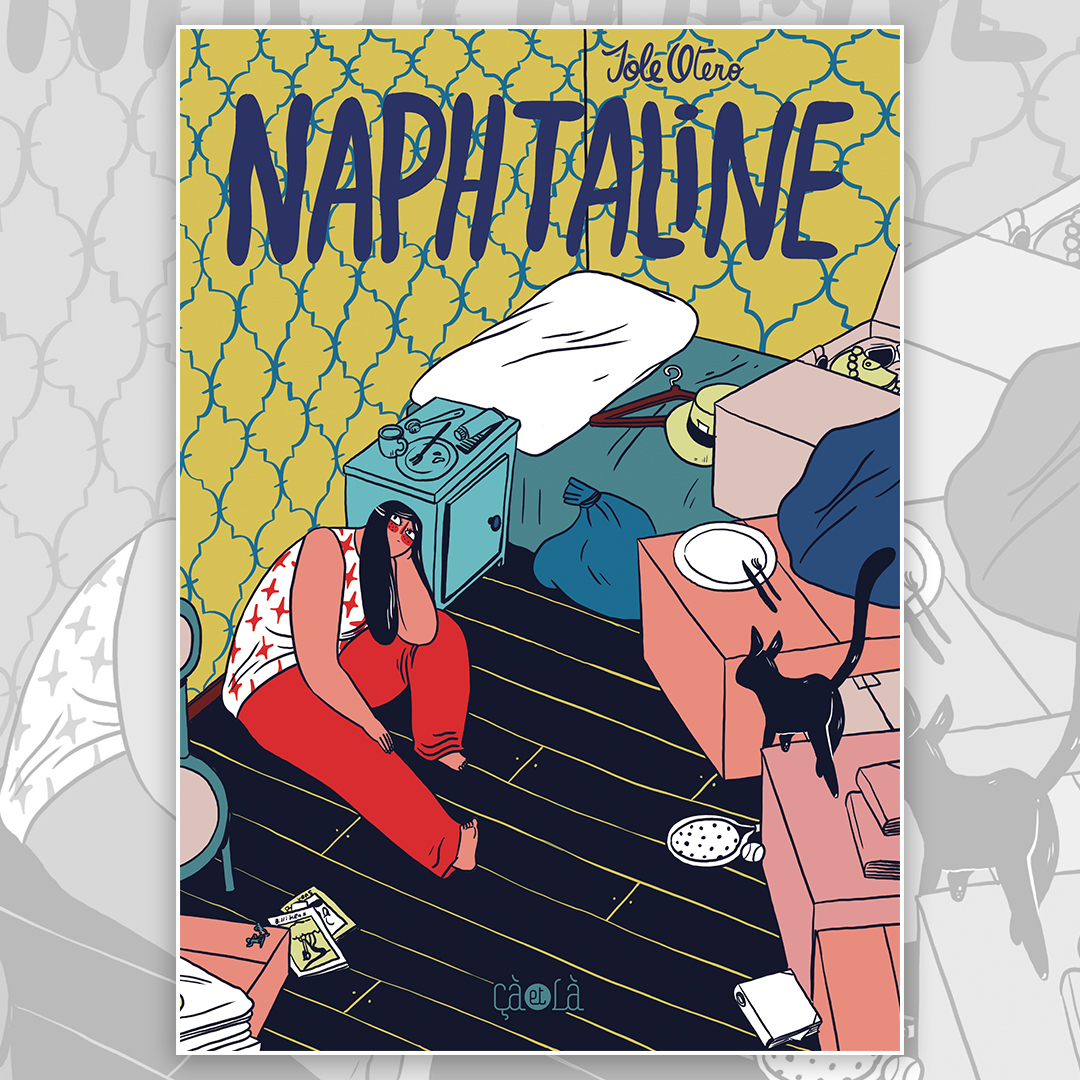
When was your first visit and what was the experience like? In 2018. I was part of the exhibition at La Maison Des Auteurs because during 2017 I did a three month residency there, in the city of Angouleme. It was nice to see the city in such a different mood during the festival. I remember it to be a little bit overwhelming.
How does Angoulême compare to your other experiences of comics-oriented events – both in your home country and overseas? It’s surprising how the public belongs to a wide spectrum of people. I’ve been in many festivals (New York Comic Con, Argentina, Spain) that were oriented to a specific kind of public – mainstream, young, mostly masculine – as well as the Colombian or Finnish festival that were more oriented [towards] the indie community. [Angouleme has] space for everything but you can also meet older women, teachers. Everybody in France can be a comic reader and the festival shows that.
Tell us about your fondest memory of Angoulême FIBD, when did it take place? Probably the moment when my colleague Marcelo Quintanilla won the Fauve d’or. As he is in my publishing house it was a very emotional moment. I also meet all of my friends during the festival, and I host some of them since I live there. It’s a moment of the year very intense and filled with emotions.
From your perspective, how has the festival changed since you started attending? I haven’t noticed many changes. My experience is very personal, since I live there now, and also I’ve experienced the last festival that was a little bit different because of COVID.
BRYAN TALBOT (Writer, artist; UK, over 10)
How and when did you first learn about Angoulême? Sometime in the 80s. Don’t remember how.
When was your first visit and what was the experience like? 1990 was “British Year” and dozens of UK writers and artists were invited and flown over for the event, including myself.
How does Angoulême compare to your other experiences of comics-oriented events – both in your home country and overseas? It’s my favourite. Not quite as big as the Lucca festival these days but still an amazing experience, with great exhibitions.
Tell us about your fondest memory of Angoulême FIBD, when did it take place? Can’t remember the year, but it was walking Will Eisner and his wife Ann around the town. A few years later, I did the same for Scott and Ivy McCloud.
From your perspective, how has the festival changed since you started attending? There seems less sponsorship money being poured into the festival. There used to be a free bar for professionals and the staging of the exhibitions was a lot more spectacular, involving huge purpose-built sets.
RON WIMBERLY (Cartoonist, USA, 2-5 times)
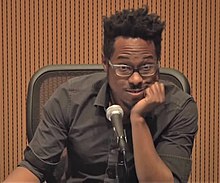
How and when did you first learn about Angoulême? I can’t recall
When was your first visit and what was the experience like? Must’ve been sometime after the 2015. Loved the exhibitions; hated the weather.
How does Angoulême compare to your other experiences of comics-oriented events – both in your home country and overseas? Angoulême is the best big convention I’ve attended. Large American comic cons have more in common with a PT Barnum circus than the comics medium.
Tell us about your fondest memory of Angoulême FIBD, when did it take place? Any number of dinners with friends and acquaintances far and wide… I think once Jean-Pierre Mercier walked me through the Metal Hurlant / A Suivre exhibition before lawyers snatched all of Moebius’ work off the walls.
From your perspective, how has the festival changed since you started attending? More and more the pre-festival parade of political dramas are followed by hollow, deferential concessions… which is maybe progress, I don’t know.
Any additional comments: I wish they’d hold it in the Summer! I bet attendance would go through the roof.
ONE-TIMERS (so far)
LOU CROSBY (Artist, UK, 1 time)
How and when did you first learn about Angoulême? Through LDC [Laydeez Do Comics]
When was your first visit and what was the experience like? 2017 really enjoyed the atmosphere. Though the main women’s event we were associated with was put on early in the morning in a very small venue which was over subscribed. We were mainly at a women’s ‘fringe event’ all day Saturday which was really great but not included in the festival.
How does Angoulême compare to your other experiences of comics-oriented events – both in your home country and overseas? Lovely setting, much more commercial one hall looked like a high street bookshop, nice to see different work.
Tell us about your fondest memory of Angoulême FIBD, when did it take place? The women’s event on the Saturday. The mirror hall disco in the town hall centre – we spent our evenings there after meeting up in local bars. Great international vibe and fun seeing who danced to what!
GAREN EWING (Cartoonist, UK, 1 time)
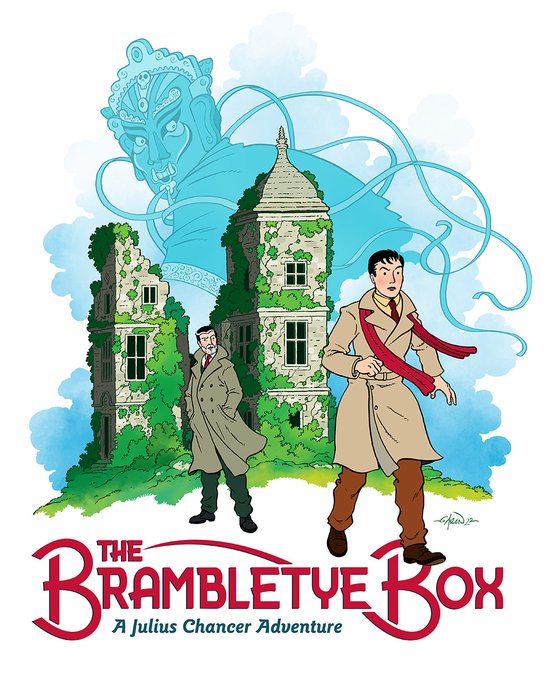
When was your first visit and what was the experience like? 2014. Overwhelming but excellent, very well looked after by my publisher.
How does Angoulême compare to your other experiences of comics-oriented events – both in your home country and overseas? Much bigger, obviously, but also the acceptance of comics as part of the country’s culture was very evident; huge international presence really showed the wider scene and made you feel (a small) part of it. Smaller UK shows have a nicer community feel though.
Tell us about your fondest memory of Angoulême FIBD, when did it take place? The food and accommodation were amazing (thank you, my publisher!). Taking a walk around Angouleme and getting a bit lost in its quieter streets with a couple of Dutch comics creators, just talking about comics, was one of my favourite moments. Most of the time I was signing, so didn’t get many moments away from the table.
Any additional comments: The journey (travelled on my own by trains – 10 in all there and back) was exhausting – but worth it.
MIRIAM LIBICKI (Cartoonist, American-Canadian, once only)
How and when did you first learn about Angoulême? I think in the early 2000s, when I first began self-publishing my comics.
When was your first visit and what was the experience like? 2020. I was in residency at la Maison des Auteurs, so I got a free pass to the show. It was revealing, inspiring, overwhelming.
How does Angoulême compare to your other experiences of comics-oriented events – both in your home country and overseas? I feel like Angouleme is both sprawling and intimate and somehow egalitarian– you can’t really tell how large a company is by looking at their booth.
Tell us about your fondest memory of Angoulême FIBD, when did it take place?
1. I am friends with Columbia’s comics librarian, Karen Green. She has been going to FIBD for decades and knows everyone. I myself was too shy to network, but it was so impressive and thrilling to network vicariously through her, following her around on the first day.
2. On the last day of the festival, my kids and I stumbled into the foreign-acquisitions barn, and talked to some publishers. This wasn’t really networking either; I didn’t talk about my comics at all. But we got a huge haul of free graphic novels the publisher didn’t want to cart home, including lots of kids’ books. Living in France, it was not easy for us to buy our kids books in English, and they were sooo happy to read all these brand-new GNs until they fell apart.
Any additional comments: I have tabled at many North American cons, but I feel intimidated (though also really attracted to the idea of) tabling one day at FIBD. I feel like my French would have to be a lot better, and my pitching style would be totally different. But it is definitely a goal to be translated one day and sign at a publisher’s table.
CHENG TJU “CT” LIM (Writer, Singapore, 1 time only)

When was your first visit and what was the experience like? 2014, great atmosphere and comics culture. Truly a city of comics for that few days
How does Angoulême compare to your other experiences of comics-oriented events – both in your home country and overseas? Less commercial, more art.
Tell us about your fondest memory of Angoulême FIBD, when did it take place? Great food, conversations
Additional: CT wrote a blog post about his visit and you can check it out here.
LONG-TIMERS
PAUL GRAVETT (International Comics Activist, UK, been “every year since 1984 except one” so…39 times this year!!!)
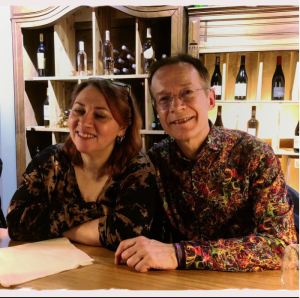
When was your first visit and what was the experience like? As co-publishers of Escape Magazine (1983-89), Peter Stanbury and I were invited as British press. At the time, Angoulême was not very international and I think we were the only people there from the UK. The experience was exhilarating and inspiring, and although obviously modest by today’s huge spectacle, we’d never seen a comics festival on such a scale. The press were treated very well, we were even given meal vouchers. And the exhibition of Jacques Tardi’s oeuvre was immersive and state-of-the-art, using headsets to change the soundtrack from gallery to gallery. You even walked down into a trench to peek over the top and look at Tardi’s WWI original artworks. I wrote a report for Escape and we vowed to go back!
How does Angoulême compare to your other experiences of comics-oriented events – both in your home country and overseas? I guess three differences would be: the large and broad public enjoying it, not just fans, proof of how much the French love comics; its involvement and presence across the city, even in the cathedral (and not cut off and stuck inside some vast conference centre), and of course in the CNBDI and then la Cité with its Museum; and its truly international participants, so many global friendships and projects have begun here. When Julie Tait was first developing her ideas for the Lakes International Comic Art Festival here in the UK, I urged her to come to Angoulême and see how a comics event can take over a whole city and be enjoyed by, and engage with, (mostly!) all of the residents. I know it really encouraged her with LICAF.
Tell us about your fondest memory of Angoulême FIBD, when did it take place? One would have to be in 1990, so my 7th, when the UK was the guest country. I got the job of Co-Ordinator for invited guests and exhibiting publishers and I curated ‘God Save The Comics!’. This remains the most extensive exhibition of original British comics art I’ve ever come across, brilliantly designed by the Lucie Lom team and premiered at the brand new CNBDI (‘Centre national de la bande dessinée et de l’image’). I’ll never forget standing outside, high up on the Castro building, now the Vaisseau Moebius, as fireworks filled the sky to celebrate the building’s opening. This year’s festival is my 39th, so I’ve got tons more fond memories!
From your perspective, how has the festival changed since you started attending? The Rights Area, a sort of ‘Mini-Frankfurt’ for comics publishing, was a vital development, exemplified by Ivanka Hahnenberger’s initiative to invite more U.S. and other non-French publishers. And of course the increasing internationalism of exhibitors and public. For example, I’m so glad this year marks the first time any publisher from the Philippines has exhibited – Komiket and PICOF (the Philippines International Comics Festival) have a stand in the BD Alternative section and five titles shortlisted for the prize.
Any additional comments: For me, making the ‘pilgrimage’ to Angoulême and meeting so many friends, old and new, really marks the start of my New Year. Every time, it reaffirms my passion for the medium and recharges my batteries. This is not some multi-media ‘Comicon’ but a comics festival all about comics, where the medium we love really takes centre stage. Bravissimo for the first 50 – and a toast to the next 50! I’m sure amazing things are still to come!
MICHEL KICHKA (Cartoonist and artist, Israel, attended over 20 times)
How and when did you first learn about Angoulême? In the 80’s.
When was your first visit and what was the experience like? In the early 90’s. It was a powerful experience, meeting so many professionals, visiting so many exhibitions and sharing this experience with so many fans.
How does Angoulême compare to your other experiences of comics-oriented events – both in your home country and overseas? It’s the most international festival I know, the most open to different comics cultures
Tell us about your fondest memory of Angoulême FIBD, when did it take place?
Two fondest memories. The first one when I took my students from Jerusalem to the 1996 festival and we met [Art] Spiegelman, Chris Ware, Paul Pope, [David] Mazzucchelli and others.
The second one was when I was invited to sign my first graphic novel [Deuxième Generation] at Dargaud in 2013.
From your perspective, how has the festival changed since you started attending? The festival is more international and it’s a very positive point. It began as a French-Belgian event, became later more European, and now it’s the main international of all festivals.
RUTU MODAN (Cartoonist, Israel, 10-15 visits)

How and when did you first learn about Angoulême? At art school.
When was your first visit and what was the experience like? 1996. It was a life-changing experience.
How does Angoulême compare to your other experiences of comics-oriented events – both in your home country and overseas? My opinion is it’s the best international comics festival for artists.
Tell us about your fondest memory of Angoulême FIBD, when did it take place? There are many wonderful moments I can remember but nothing will ever compare to the impression when I first entered the Champs de Mars tent in 1996. It was also the first time in my life I attended a comics festival. Coming from a country with no comics scene and industry, not one publisher or a shop even (things have improved since then) – just seeing so many books, publishing houses – established or independent – and especially so many comics fans was overwhelming. It was like I was talking gibberish for a decade and suddenly discovering there’s a place where anyone can understand what I’m saying. It motivated me immediately to keep doing comics. For me Angouleme FIBD is my professional home.
From your perspective, how has the festival changed since you started attending? It becomes more international in terms of exhibitions and awards.
[NOTE: In case you didn’t know already, Rutu Modan was one of those students mentioned in Michel Kichka’s 1996 memory]
LAURENT MÉLIKIAN (Journalist, France, 30 times)
How and when did you first learn about Angoulême? In the 70’s.
When was your first visit and what was the experience like? 1990 as a tourist but immediately was interested by the international rights market.
How does Angoulême compare to your other experiences of comics-oriented events – both in your home country and overseas? Angouleme’s program is so broad that it may give the illusion to French people that most of the comics world is there. Thanks to visits to San Diego, Algiers, Bucheon, I have discovered so many other perspectives on sequential art.
Tell us about your fondest memory of Angoulême FIBD, when did it take place? I could mention hundreds. To me Angouleme is my Mecca. Going there is like a pilgrimage. So whenever it’s possible I use 4 or 5 days to reach the city with my bicycle. Unfortunately it hasn’t been possible since I work for ADAGP [French artists’ rights organisation based in Paris].
Probably my fondest memory linked to Angoulême occured in Boca Raton in 1997. As I knew that Will Eisner was going to be one of the guest of honor at the upcoming festival, I secured a double-page interview in a French news magazine and flew off to Florida. I had a two hour lunch-interview with The Genius and that’s probably how I got most of my basic knowledge in the medium. Worth the flight’s price. I was honored to give him the magazine with our interview that Angoulême.
From your perspective, how has the festival changed since you started attending? Slowly and slowly, it became bigger and bigger. Fans slowly changed. Graphic novels got more attention, taking the place occupied by comics albums [the 48-page traditional format of Franco-Belgian comics]. As everywhere, gentrification took over.
The Festival’s President [Grand Prix] was elected by former presidents inside the “Acadèmie d’Angoulême “. Now they are named after an election which seems to me totally disconnected from the French comics scene – meanwhile important French comics artists are now entering the real national art academies such as the Acedemie des Beaux-Arts in Paris.
FREDRIK STROMBERG (Journalist and National Promoter, Sweden; 19 visits):

How and when did you first learn about Angoulême? Thorough an article in the Swedish journal Bild & Bubbla.
When was your first visit and what was the experience like? I first visited in 2003, and loved it. I early on met Bob Beerbohm from the US, who had been several times already and took it upon himself to introduce me to everyone. It all felt very inclusive and welcoming and I felt really at home.
How does Angoulême compare to your other experiences of comics-oriented events – both in your home country and overseas? Angoulême is my absolute favorite festival, and I’ve visited many all over the world. The exhibitions are outstanding, the mix of professionals is much more international than at any other festival, the breadth of exhibitors gives you a really good overview of the French comics market, and the food and beer is astounding …
Tell us about your fondest memory of Angoulême FIBD, when did it take place? At my very first festival, Bob Beerbohm introduced me to Art Spiegelman, and as I was carrying around a dummy for my forthcoming book Black Images in the Comics, I showed it to him and he was really into it. Some weeks later, I got an excited mail form someone at Fantagraphics, not by editor Kim Thompson, who had just had an impromptu visit by Spiegelman, who had gushed on about my book, and the person at Fantagraphics was very clearly excited about the whole thing. :)
My other best memory is when we had a major exhibition on Swedish comics, which I curated, and Kristiina Kolehmainen, an important figure in Swedish comics as the head of the Comics Library in Stockholm and an avid fan of the Angoulême Festival who had dreamed of a Swedish exhibition for years and years, just sat in the middle of the exhibition, smiling. She was at the time terminally Ill from cancer and died a few months later, so that weak-but-still smile of hers in Angoulême will stay with me forever.
From your perspective, how has the festival changed since you started attending? It’s embraced the international theme much more wholeheartedly. Even when I started traveling to the festival, they stated that they had an international theme, but still most awards, exhibitions etc. centered around French comics. This has all changed.
Another change has come concerning the view of women in comics. Coming from Sweden, where we’ve had a vigorous debate on feminism and equality for decades and equality is sort of built into the very foundation of our society, coming to Angouleme in the early aughts was a cultural shock. This has slowly changed and today I feel more comfortable bringing Swedish female comics artists, for example.
Any additional comments: I just love the Angoulême festival, and will try to keep attending in some capacity for years to come.
JOURNALISTS AND SCHOLARS [7 People]
DEBORA AOKI (Journalist, US, 2-5 times)

When was your first visit and what was the experience like? I first went in January 2020, just before COVID pandemic hit. I had previously thought that I’d never go to Angouleme because I had heard that it was extremely difficult to get accommodations / hotel near the event venue. However, Karen Green from Columbia University had booked a shared house that year, and Heidi, Karen and I went, and stayed there with four other people visiting from Israel.
I was so impressed by Angouleme — I had heard that it “basically takes over the whole town,” but to actually experience it was something else. I was most impressed by the variety of comics on display and how well organized it was. Also, that it was just about comics! Not video games or TV shows, anime or movies or even science fiction/fantasy prose novels as you see in US comics shows. Angouleme is just COMICS, and the love of the artform.
The museum exhibits blew me away. The Yoshiharu Tsuge exhibit was probably the most complete and well-curated overview of his work ever displayed in the world — not even in Japan have I seen such a complete overview of this important creator’s work and so many original pieces of artwork too. I was also thrilled to meet Tsuge-sensei and his son, and to hear so many fascinating stories about how the exhibit came to be.
The Battle Angel Alita exhibit was also stunning. Again, I rarely see this type of exhibit showcasing a single manga creator’s work with so many original pieces of artwork on display in N. America. I think I can count them on one hand over the 15 years I’ve been working as a manga journalist that I’ve seen anything like this in N. American (Taiyo Matsumoto at TCAF, Osamu Tezuka at the Asian Art Museum in San Francisco and Naoki Urasawa at Japan House Los Angeles. If you count the British Museum Manga exhibit, then that’s four. But that’s it, really.)
And the mind-blowing thing is, Angouleme does this almost every year, and does it with such love and respect for manga. If only to see these exhibits and meet these manga creators in person, this alone is worth my time / money to fly to France to attend Angouleme whenever I can.
Also, the free cognac in the press room at city hall? Seriously, American comic conventions can barely give journalists a water cooler and a power strip to plug in a computer — and that’s at the NICE, well-organized conventions.
How does Angoulême compare to your other experiences of comics-oriented events – both in your home country and overseas? Oh, just a different world and vibe all together. I think the only N. American show that even comes close was Toronto Comic Art Festival. All other N. American shows are “pop culture shows,” not celebrations of visual storytelling and comics creators like Angouleme is.
I mean, that whole business of standing in line and getting someone to paint / draw a full-color work of art in your book instead of scribbling their name on the cover just blew me away.
The comics shows I’ve attended in Japan are an entirely different beast. They’re mostly for individuals or small groups to show and sell their independently published comics or fanzines. And these shows (Comitia and Comiket) are amazing in their own right, but they serve a completely different purpose, have a different vibe than Angouleme.
I think it makes a huge difference that France treats comics / BD as an artform worthy of government support and respect as “art and culture,” not just a means to an end (e.g. a pitch to make a movie or TV show or to sell toys).
Tell us about your fondest memory of Angoulême FIBD, when did it take place? I guess one of my favorite memories is meeting Yoshiharu Tsuge and his son, and hearing about how his son had to painstakingly re-paste a lot of the typeset words on the pages because they were stacked up and untouched for years, and when he picked them up, the typeset words just fluttered off the page around like moths. They put a lot of work into collecting his original artwork and showing it in the Angouleme Museum like they did. I was stunned to hear that there hasn’t been (and has never been) a show of his work that was as complete and far-ranging as the show at Angouleme.
Another happy memory was when I returned to the show in March 2022 and it since it was later in the year than usual, to see the trees in bloom outside of city hall. It was so neat to come and be a little less overwhelmed than I was the first time I attended, and run into old friends on the street, like Paul Gravett.
From your perspective, how has the festival changed since you started attending? Well, I’ve only attended twice, and only in the most recent years, so I don’t think I’ve noticed much change, other than the show was much less crowded (but still lively) in 2022 than in 2020.
Any additional comments: I’m not able to attend this year (to my regret), but feel confident that I will attend again, someday soon.
ROBERT L BEERBOHM (Journalist, US, 9 times)
How and when did you first learn about Angoulême? I had been reading about it for many years in USA comics press. Alfredo Castelli in Oct 1999 invited me to Lucca to introduce to Europe the official still-earliest-known printed in the United States sequential comic book. It was published by Benjamin Day Sr as co-owner of Wilson & Co as Brother Jonathan Extra #9 September 1842.
The Adventures of Obadiah Olbuck using the Tilt & Bogue printing plates from year before 1841. The excitement stirred spurred Thierry Groensteen, then main curator of CNBDI museum inviting me to speak and show my original copy at my first Angouleme 2000.
That was the first time I had seen Robert Crumb when he was festival president since he and Aline had come thru my 2nd Haight Ashbury location near corner at Masonic comic book & concert poster store, I was calling Best Comics right before the moved to France. Met Jean Giraud for first time.
And gave talk on USA’s 1842 Obadiah Oldbuck in the museum as all sorts of Euro scholars also readjusted their understanding of Topffer’s comic books he created in Geneva Switzerland. Some always thought Americans arrogant re Yellow Kid (so did I), but none of them had ever seen any reference to Obadiah Oldbuck first showing up publishing Sept 1842.
When was your first visit and what was the experience like? Jan 2000 – have already expressed same in other answers. Might sound redundant. I might add here on Sunday I was asked by either Thierry Groensteen – might have been Jean-Pierre Mercier – that Claude Moliterni being then in Paris summoned me to his place the day after the festival. He was delighted to page thru my original copy. I remember he had Milton Caniff’s first 1934 Terry and the Pirates daily original art framed on his wall. My understanding [is] he was one of the main founders of the Angouleme Festival and pushing for the establishment of the national [comics] museum there. Turned a long time read-about name into a friend.
How does Angoulême compare to your other experiences of comics-oriented events – both in your home country and overseas? At age 14 I rode a Greyhound Bus 28 hours from Fremont, Nebraska to Houston, Texas arriving June 15, 1967, for Houston SouthwesternCon June 16-18, 1967. I turned 15 that Saturday. For the first time I felt like I was “home”. Comic book collectors were coming out of the proverbial closet coming together in our fandom cults of looking back thru the popular culture of previous generations. As well as keeping up with new stuff.
Since then, thru the decades, I have attended over a thousand (mostly) comics shows mostly in America. Some other fandom’s show for a while as they sprouted.
Many years was setting up at 30 to 35 a year. 100-hour weeks were normal back then working 7 days a week for months on end for many years.
Have talked with hundreds of thousands from all over the world. As fans with mutual respect. As a seller who made customers into friends for a long time till I had to stop.
Set up at my first one in 67, more shows set up at in 68 69 once I got my driver’s license and by 1970 a 65 Chevy Impala pulling a U-Haul trailer loaded down with comics to Disneyland Hotel in Los Angeles, Phoenix, Multicon Oklahoma City, Seulingcon NYC July 4th weekend the main one that year, San Diego Comicon’s first show, Detroit Triple Fan Fair lots of comics. Met Berni Wrightson there for first time. Was one of only two comics dealers would (gladly on my part) trade him his art for my vintage EC, Frazetta, Wood, Ingels, etc. Good friends till his end. Miss Berni a lot.
Angouleme is simply more of same. Larger scale. Thru-out the town. I like that a lot. Lots of other shops. The various Pavilions. Met Fred Stromberg from Sweden in Chat Noir. Eddie Campbell. So many names who became friends in Angouleme is always a wonderful experience(s).
Tell us about your fondest memory of Angoulême FIBD, when did it take place? 1) Presenting America’s 1842 Obadiah Oldbuck in CNBDI 2000 at our first “Plat Lunch” in CNBDI cafe. Then every Friday at noon each Festival I went to thru 2007. Eight in a row. Very fond memories.
2) Art Spiegelman inviting me and Huib van Opstal to a private tour of his exhibit, he was tasked with being President of the Festival that year 2012
Inbetween many of the shows are fond blurs. Le Chat Noir at night after dinner.
From your perspective, how has the festival changed since you started attending? I went 2000 every year thru 2007. Then 2012. Been wanting to go back every year since.
KAREN GREEN (Comics Librarian @ Columbia University, US, 6 times)
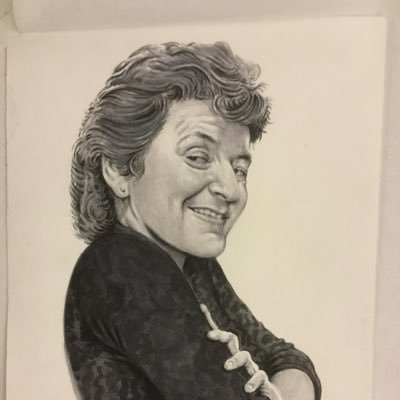
When was your first visit and what was the experience like? 2015. Ivanka Hahnenberger had invited me to moderate a panel of publishers, on comics and education, in the Rights & Licensing tent. I was put up in a lovely B&B, but it was a little far from town. I had been hearing about Angouleme for years, and it was my dream to go, but nothing prepared me for the sheer comics immersion of the entire city. I knew by the end of the first day that I would have to find a way to come back every year!
How does Angoulême compare to your other experiences of comics-oriented events – both in your home country and overseas? One of the things that struck me forcefully on my first visit was how deep comics were in the fabric of the city’s life and history. The combination of printing history and the size of the city makes it easy and even logical for everyone to hop on the wagon. Every little store has some sort of comics display. Buildings have murals by famous BD artists, or have windows painted over and turned into comic strip panels. The entire city pulses with love and respect for the medium. I’ve never seen anything like that anywhere else.
Another aspect that struck me forcibly was the sheer number of publishers! The “Monde des Bulles,” with the large, more commercial publishers, is impressive enough. But to go into the “Nouveau Monde” tent and think you’ve reached the end, only to find more…over 100 publishers! It’s humbling!
Tell us about your fondest memory of Angoulême FIBD, when did it take place? Too many to relate, but one particularly special experience was in 2017, when Denis and Violet Kitchen attended as part of the Will Eisner Centenary festivities. Jean-Pierre Mercier, from the Cite international de la bande dessinee et de l’image, invited us, along with Mark Bode, Jean-Christophe Menu, and Ronald Wimberly, into the museum’s storage areas and brought out one magnificent piece of art after another. Herge, Tardi, Breccia, Herriman, Segar, Foster, Davis, Caran d’Ache: the names went by almost in a blur. What a privilege to be allowed to see such a spectacular collection!
From your perspective, how has the festival changed since you started attending? I’ve been going for less than a decade, so most of the changes happened before I arrived on the scene. It does seem to keep on getting larger and in more venues around the city. The hot restaurants seem to change from year to year. For me, personally, the biggest change is how much easier it is to find accommodations with the rise of AirBnB!
Any additional comments: I am broken-hearted at the closing of Le Pistou, where I had an annual tradition of eating their pizza canard, tout entier. I would never even have gone into a pizzeria in France if I hadn’t been looking for lunch on my first visit, with a friend of limited palate. And if I hadn’t, I’d never have discovered a pizza with magret of duck, smoked duck, and foie gras. This year will be my first year without it!
PIERRE LEBEAUPIN (Journalist – Senior French Correspondent @ Fleen, France, once only)
How and when did you first learn about Angoulême? From mainstream media, as soon as I was able to watch them in the 90’s.
When was your first visit and what was the experience like? In 2020; it was magical in the same sense that Disneyland is magical: you get to meet people and have experiences (expos, panels, collectible finds, etc.) you could only dream of anywhere else, but they are always much too short as it’s overcrowded and everyone is overworked, so in practice you end up spending a lot of time in lines and going to and fro. And that was with the benefits from the experience of first going to smaller festivals (transportation, lodging, time manangement, note-taking and other mobile work tooling, etc.): attending Angoulême can be a stressful experience, and without a good planning can easily become a nightmare.
How does Angoulême compare to your other experiences of comics-oriented events – both in your home country and overseas? My experience is with comics festivals and anime cons in France (and one in Brussels). Angoulême, while undeniably valuable, is actually less conductive to the kind of work I want to accomplish at a comics festival: discuss with and interview creators, learn from panels including asking questions, get to as many expos as I can, etc. This (and Covid) is the main reason why I keep going to smaller festivals but have not gotten around to returning to Angoulême since.
Tell us about your fondest memory of Angoulême FIBD, when did it take place? My favorite Angoulême memory is how it takes over the town: banners all over the streets, signage, shop windows contributing to the celebration, projections on monuments, etc. It provides kind of a “comics pride” vibe that I haven’t seen anywhere else: even the second biggest festival in France cannot obtain this in its own town.
NICK NGUYEN (Journalist, Canadian based in Belgium, 13 times)
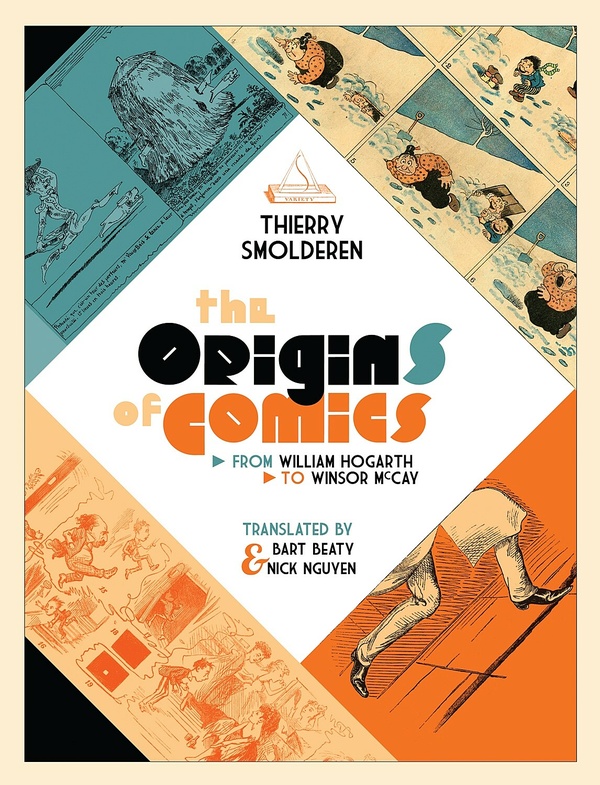
When was your first visit and what was the experience like? First festival visit was 2010 (Blutch Presidency). It was exhausting, overwhelming and everything that I hoped it would be in terms of scale and scope.
How does Angoulême compare to your other experiences of comics-oriented events – both in your home country and overseas? Nothing compares to it in terms of scale, scope, focus, attendance. The exhibitions can be of varying quality, but when they are on, they are ON.
Tell us about your fondest memory of Angoulême FIBD, when did it take place? In 2012, having dinner at La Palma at a table with Joost Swarte and Charles Burns, and scoring Burn’s tablemat sketches.
In 2015, in the wake of the Charlie Hebdo murders, to experience the tribute exhibition that was hastily put together amidst the heightened security measures.
In 2022, the feeling of satisfaction upon hearing the live announcement that Julie Doucet won the Grand Prix
From your perspective, how has the festival changed since you started attending? The Grand Prix voting system has changed the politics of the Presidency, which in turn affects the overall vibe of the Festival. This has opened up the festival toward a plurality in comics voices and art that was limited in the “friends of the former Grand Prix winners” approach.
Stephane Beaujean’s time as the Festival’s artistic director was a major success for transitioning toward a more focused approach to the exhibitions (including the publication of the fantastic exhibitions catalogs).
The major change has been the massive spike in the presence of manga and Asian comics at the festival (once sharing space in the Major Publishers tent, now having their own pavilion in Manga City).
BARBARA POSTEMA (Comics scholar, Netherlands, 2-5 times)
How and when did you first learn about Angoulême? From other comics scholars, in the early 2000s.
When was your first visit and what was the experience like? 2014. It was an eye-opening experience: wonderful to see comics embraced by such a cross section of the population. Everyone from buses full of school children to elderly couples attended.
How does Angoulême compare to your other experiences of comics-oriented events – both in your home country and overseas? It compares favourably: wonderful, high quality exhibits, exciting vendors. The only barrier for me is the language, which means I can’t get the most out of artists talks and such.
Tell us about your fondest memory of Angoulême FIBD, when did it take place? Meeting up with friends over wonderful food
(La passe muraille in 2014).
Getting nice dédicaces in my books.
From your perspective, how has the festival changed since you started attending? COVID changed things, but otherwise last year was not significantly different from 2014, as far as I could tell.
PUBLISHERS [10 People]
TONY BENNETT (Publisher @ Knockabout Books, UK, 37 times)

When was your first visit and what was the experience like? 1984. Exhilarating and overwhelming.
How does Angoulême compare to your other experiences of comics-oriented events – both in your home country and overseas? It is the biggest and best. The most varied show catering to a wide range of tastes and almost no superheroes.
Tell us about your fondest memory of Angoulême FIBD, when did it take place? Dinner with French, Spanish, and Finnish friends where we compared palindromes in our various languages while drinking cognac.
Some of the earlier exhibitions have been spectacular – I particularly remember the Bilal, Schuiten, and Goscinny ones.
Shaking hands with the then-French Minister of Culture (M. Toubon) at our stand when R.Crumb was signing copies of his book My Troubles With Women, on the same day that UK Customs were seizing copies of the book. A great example of the countries different attitudes to comics.
From your perspective, how has the festival changed since you started attending? The exhibitions are sadly less spectacular, still good. The presence of Manga has greatly increased. Visitor numbers have grown year on year.
Any additional comments: I love it and everyone should go at least once. The only equivalent we have in the UK is the Lakes International Comics Art Festival.
PEGGY BURNS (Publisher @ Drawn & Quarterly, Canada, 2- 5 times)
How and when did you first learn about Angoulême? Always have known for as long as I have been in comics.
When was your first visit and what was the experience like? The lore surrounding Angouleme was that hotels were harder to come by than San Diego. So we never thought about attending, and in the early years of me being at D+Q (2023 is my 20th year) we did not have enough money to even think about traveling to Europe. Perhaps about 13 years ago Ivanka Hahnenberger reached out to invite us to be part of the foreign rights delegation. She was an amazing host, and made me realize what a tool the show can be.
How does Angoulême compare to your other experiences of comics-oriented events – both in your home country and overseas? The Nouveau Monde [tr. “New World”] tent is tantalizing, very similar to a small press show in North America, but no t-shirts, Funko, etc. Just all comics. You walk in and you immediately see L’Association, and perhaps David B signing. And then you’ll see Cornelius. As you dreamt it would be and as it should be. No other show has placed such an emphasis [on] comics as professional business AND ALSO art like Angouleme has with their international rights tent but also wonderful lovely legitimate art exhibits. I think the real sticking point that makes the festival what it is, is that it has an Artistic Director, and that the Grand Prix is voted on by creative peers. In other ways, it’s a lot alike, there’s a superhero tent and the French love genre comics, and of course their entire point is to sell comics, but as anything French it doesn’t feel crass and the only thing. I also have never had to navigate around groups of school kids attending a comics show before.
Tell us about your fondest memory of Angoulême FIBD, when did it take place? Meeting Aline Kominsky-Crumb in the Nouveau Monde tent when I travelled to the festival by myself. We went out for a glass of wine at Le Chat Noir and that is when the idea of D+Q publishing her work started. My second favorite memory is Seth’s speech at the Fauves in 2019 tied with also meeting Tsuge that year for his exhibit! Moebius was also very charming to meet. Lastly, somewhere on the internet you can find a video of Tom Devlin arm wrestling the Finnish cartoonist Tommi Musturi the first year we attended, with everyone late at Le Chat Noir cheering them on.
From your perspective, how has the festival changed since you started attending? It hasn’t changed much. Please don’t change!
Any additional comments: If you are a professional attending the show, please come to the D+Q spotlight panel on Friday morning 11h in the international rights tent where Bill Kartalopoulos will ask myself, Senior Editor Tracy Hurren and Marketing Director Julia Pohl Miranda questions on how D+Q has come to be a thoroughly modern graphic novel company in the 21st century.
SERGE EWENCZYK (Publisher @ Editions Ҫa Et La, France, 18 times)
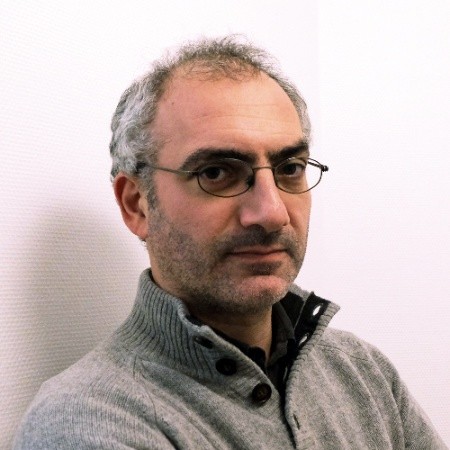
When was your first visit and what was the experience like? The year I created my publishing company (2005). It was overwhelming. I was super impressed by the number of publishers and authors attending the event. And by the long lines for signings.
How does Angoulême compare to your other experiences of comics-oriented events – both in your home country and overseas? I’ve been to several comics events in the US. Especially in NY. I attended the first two editions of New York Comic Con and hated almost everything about it. The fact that the publishers booths were lost in the middle of video games stands, TV and movies; the small stands with former celebrities selling signings; all the people cosplaying as Jedi. I found the whole experience quite depressing. I like MOCCA and CAB [because], even though those are fairly small events, it feels that people going there are attending because of the love of comics – which is the case of the Angouleme Festival, but on a massive scale. On top of that you have all those great exhibitions and the B2B side which has become very significative (market of international rights, meetings with bookstores, distributors, colleagues, authors…).
Tell us about your fondest memory of Angoulême FIBD, when did it take place? Winning the Fauve d’or with “Listen, Beautiful Marcia” [Écoute, jolie Márcia] by Marcello Quintanilha in 2022, obviously. (The English edition of the book will be released by Fantagraphics in 2023).
From your perspective, how has the festival changed since you started attending? It’s been growing steadily, there are more and more exhibitions, and the business side of the event makes it an event impossible to avoid if you’re in the industry.
Any additional comments: I feel extremely lucky to have such an amazing event in the country where my publishing company operates.
MIKE KENNEDY (Publisher @ Magnetic Press, formerly of Archaia Entertainment, US, 8 times)
How and when did you first learn about Angoulême? As publisher at Archaia Entertainment; Mark Smylie introduced me to the festival.
When was your first visit and what was the experience like? 2012 — As a guest publisher, it was a joy, and a real eye-opener to the world of amazing content and creators that were (and remain) unheard of in the US.
How does Angoulême compare to your other experiences of comics-oriented events – both in your home country and overseas? It is unlike any typical American convention. Being spread out in tents peppered throughout an ancient cobblestone city makes it distinctly European and uniquely romantic. Being held in January also adds the regular characteristic of being cold, wet, and gray, which may sound awful, but it really is part of the shared experience. Meeting with so many wonderful publishing partners and authors makes it a sort of homecoming.
Tell us about your fondest memory of Angoulême FIBD, when did it take place? Too many to sort or rank. Dining with creative friends and industry peers, speaking in roundtable discussions, meeting amazing talent who I’ve become a huge fan of (and later helping to introduce their work to the US)…
From your perspective, how has the festival changed since you started attending? It has been 3 years since we’ve been able to attend, primarily because of COVID, so it will be very interesting to see how it compares to our last visit in 2020. Ask again in 2 weeks. :)
This will also be our first year with a display table in the Rights Tent, showcasing our English editions and tabletop games, so that will be a new experience for Magnetic Press.
RICKY MILLER (Co-Publisher @ Avery Hill, UK, once only)

How and when did you first learn about Angoulême? I feel like I’ve always known about Angoulême, almost as some kind of mythical, out-of-reach land that I’d probably never get to go to.
When was your first visit and what was the experience like? I went in 2019 and I loved it so much that I assumed I’d go every year after, but getting married, pandemics and a new baby all put paid to that in the following years. The social side of things were really fun and it was great being able to interact with other publishers. The exhibitions were amazing, especially one with loads of original Batman art through the ages. The town is stunning.
How does Angoulême compare to your other experiences of comics-oriented events – both in your home country and overseas? Other than it being tough to find affordable accommodation, it was definitely one of the best experiences. We didn’t have a sales table as we’d heard English language books don’t fare that well and so I could just enjoy wandering around and chatting with people. It felt much more publisher focused rather than creator led, which is definitely a big difference to most of the other events I go to.
Tell us about your fondest memory of Angoulême FIBD, when did it take place? Definitely would be some very late drinking on the Friday night with some well-known UK comics creators, with plenty of champagne paid for by one of the sponsors. Fun night!
CHIP MOSHER (Writer and Former Publisher @ Comixology Originals, USA, 2-5 times)
How and when did you first learn about Angoulême? Reading about it in trades in the 80s.
When was your first visit and what was the experience like? My first experience at FIBD was magical. It was 2013. Just seeing how the French packaged and marketed comics in a completely different way from the US was eye opening and inspiring. The BD format really opened my eyes to new ways of thinking about how to do comics in the US. And the reverence for the material and seriousness of the French about comics as an art was also inspiring.
How does Angoulême compare to your other experiences of comics-oriented events – both in your home country and overseas? It’s more like a high end book fair then a Comic-Con. Full stop.
Tell us about your fondest memory of Angoulême FIBD, when did it take place? When I was at comiXology, we did a big deal with Editions Delcourt, and drinking loads of Cognac with Guy Delcourt in the bar at the Mercure is a very fond memory!
From your perspective, how has the festival changed since you started attending? It’s gotten bigger since 2013. The actual town of Angoueleme was struggling after the 2008 global crash, and lots of stores were shuttered. It’s been great to see the show grow even bigger over the last 10 years and then also the whole town come back in a big way.
CORINNE PEARLMAN (Publisher @ Myriad Editions, UK, 9 times)

When was your first visit and what was the experience like? 2012; representing the Myriad list to French and other publishers; very worthwhile and great contacts; also so impressed by the huge wealth of the comics industry in France.
How does Angoulême compare to your other experiences of comics-oriented events – both in your home country and overseas? There is no equivalent trade fair like it, and as a festival for creators and fans, it’s much bigger than any festival in the UK. It takes over the town.
Tell us about your fondest memory of Angoulême FIBD, when did it take place? Meeting individual publishers for the first time; it’s so rewarding to meet face-to-face. And just meeting people in the street and at their booths – it is truly convivial but often exhausting.
From your perspective, how has the festival changed since you started attending? There is more understanding of different art styles; French publishers are more open to different approaches.
Any additional comments: Myriad’s policy was to work exclusively with UK-based authors, but I would have loved the opportunity to have been able to change this!
CHRIS PITZER (Publisher @ Adhouse Books, US, 2 times only)
How and when did you first learn about Angoulême? I can’t say for certain when the first time I heard of Angouleme might have been. If I had to guess, it might have been when Matt Wagner came and gave a talk and show at the college I attended. That one presentation opened my mind to manga, the classics, and European wonders. I just checked, and that was 1990…so 33 years ago?
When was your first visit and what was the experience like? 2012 was my first visit to Angouleme. Tom Scioli, my wife and I made the trip to support the release of American Barbarian. It was a dream come true! I met wonderful French comic creators, saw amazing art around a beautiful city and finally made a life goal happen. I don’t speak French, so I had to wait for technology to catch up to allow me to make the trip. The only place I could find to rent was around 30 minutes outside Angouleme. We needed a GPS to help find our way to and fro. The one “bad” memory I have was the heavy taxes that were levied on importing American Barbarian into the country. No one had ever heard of the amount we had to pay. We all assumed it was due to the AMERICAN title.
How does Angoulême compare to your other experiences of comics-oriented events – both in your home country and overseas? I consider Angouleme the type of show you attend to recharge your creative batteries. It won’t give you the monetary awards like an SPX or TCAF (for us small pressers). But seeing how comics are treated as an art form within an ENTIRE city… well, it’s amazing. The closest we have here in North American is CXC in Columbus. Not a comic CON, but a FESTival.
Tell us about your fondest memory of Angoulême FIBD, when did it take place? I’ve only been twice. Our first time in 2012, and our second time in 2019. They both were special. Since I mentioned the 2012 already, I’ll say my fondest memory for 2019 was touring the Richard Corben exhibit with Jim Rugg. I actually tried to get Jim to attend in 2012, but it didn’t work out. So, to have him there and having the chance to take in a Corben exhibit? Heaven. Also, back in 2012, someone at Angouleme expressed interest in having Hartley Lin (Ethan Rilly) at the show, so it was nice to make that happen in 2019 as well.
From your perspective, how has the festival changed since you started attending? Well, with my only attending twice, I don’t feel I have a proper perspective to answer this question.
ERIC REYNOLDS (Publisher @ Fantagraphics, US, 2-5 times)

How and when did you first learn about Angoulême? I can’t really remember a time when I hadn’t heard of Angoulême, even if only in a kind of mythical sense.
When was your first visit and what was the experience like? My first time was I think in 2014, right after the Charlie Hebdo attack, so it was an odd vibe but I still managed to have a great time, and also learned what not to do the next time around.
How does Angoulême compare to your other experiences of comics-oriented events – both in your home country and overseas? It’s pretty singular. Not just the show itself, even — which it is — but also the environment it takes place within.
Tell us about your fondest memory of Angoulême FIBD, when did it take place? Meeting international authors for the first time, whether it be Manuele Fior, Typex, Peter Van Dongen, Antoine Maillard, etc.
From your perspective, how has the festival changed since you started attending? I can’t say I attend frequently enough to say.
BEN SMITH (Publisher @ Rebellion, UK, 2-5)
How and when did you first learn about Angoulême? An Eddie Campbell graphic novel, or just from general comics culture.
When was your first visit and what was the experience like? 2014 or 2015 I think. It was wonderful, finding oneself with a Francophone vision of global comics culture – for a non-French speaker – was energising, exciting and great.
How does Angoulême compare to your other experiences of comics-oriented events – both in your home country and overseas? It is very different. It is not just fandom-led, but rather everyone accepts comics are culturally significant and the exhibitions explore how while the tents show the industry of the present day. It is in its favour that film and TV and games are not major players in the festival. It is about comics, not comic-book-derived other media.
Tell us about your fondest memory of Angoulême FIBD, when did it take place? Visiting any of the shows I saw, Eisner, Taniguchi, Nury, many others.
From your perspective, how has the festival changed since you started attending? I have stopped attending every year, so cannot speak for now.
Any additional comments: The one country missing from Angouleme’s focus is the UK. The rich comic book history from across the channel is absent from its showcases, and that is a blind spot in a festival that otherwise represents the globe successfully.


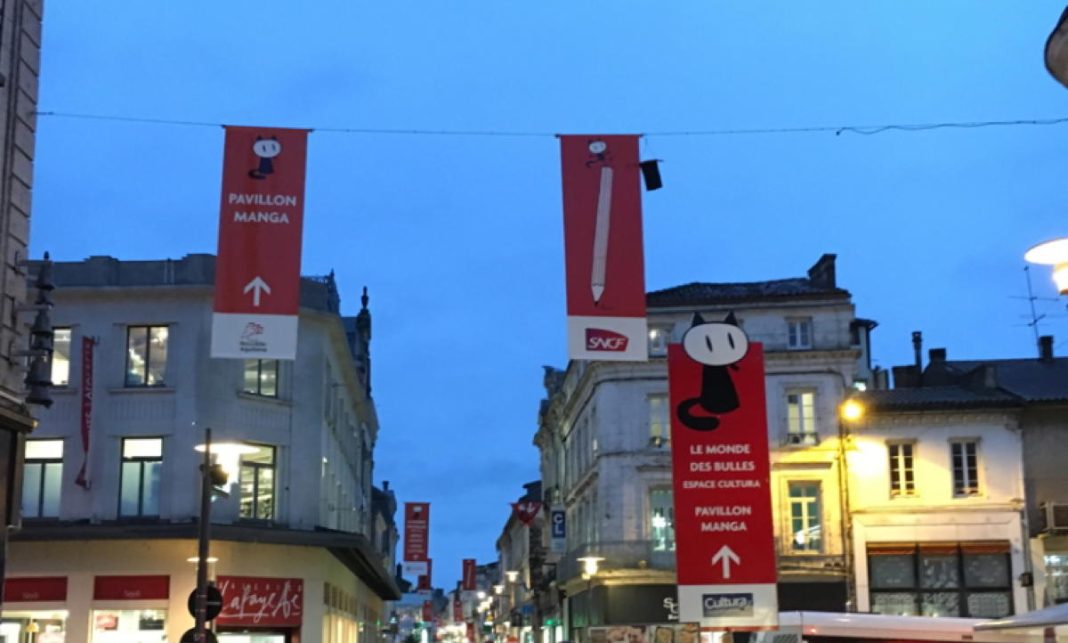
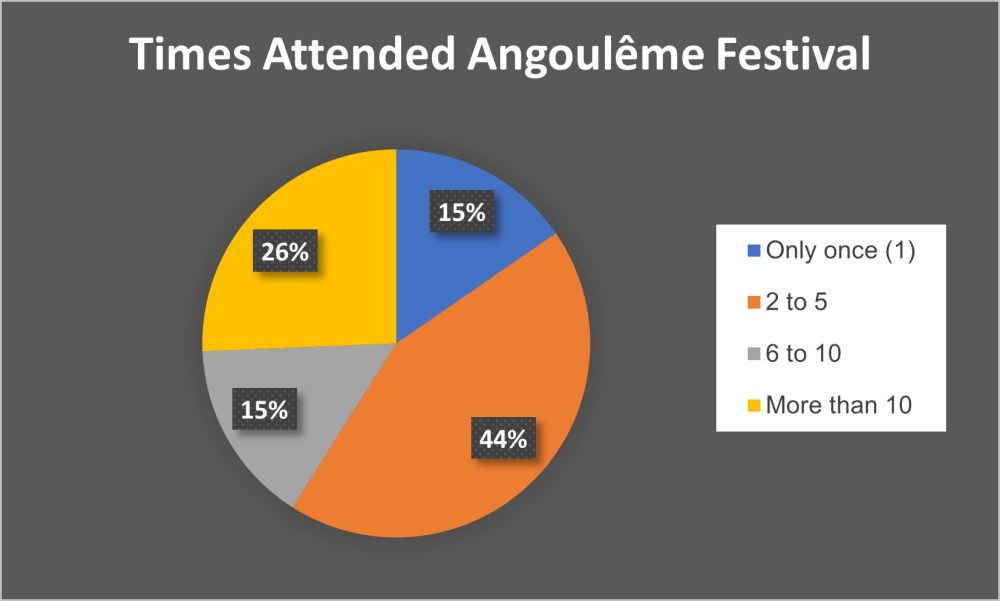
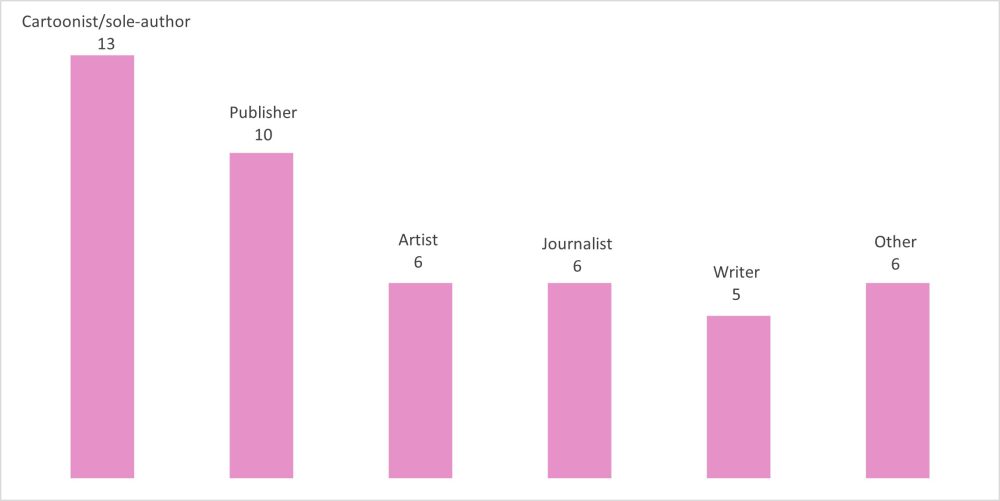

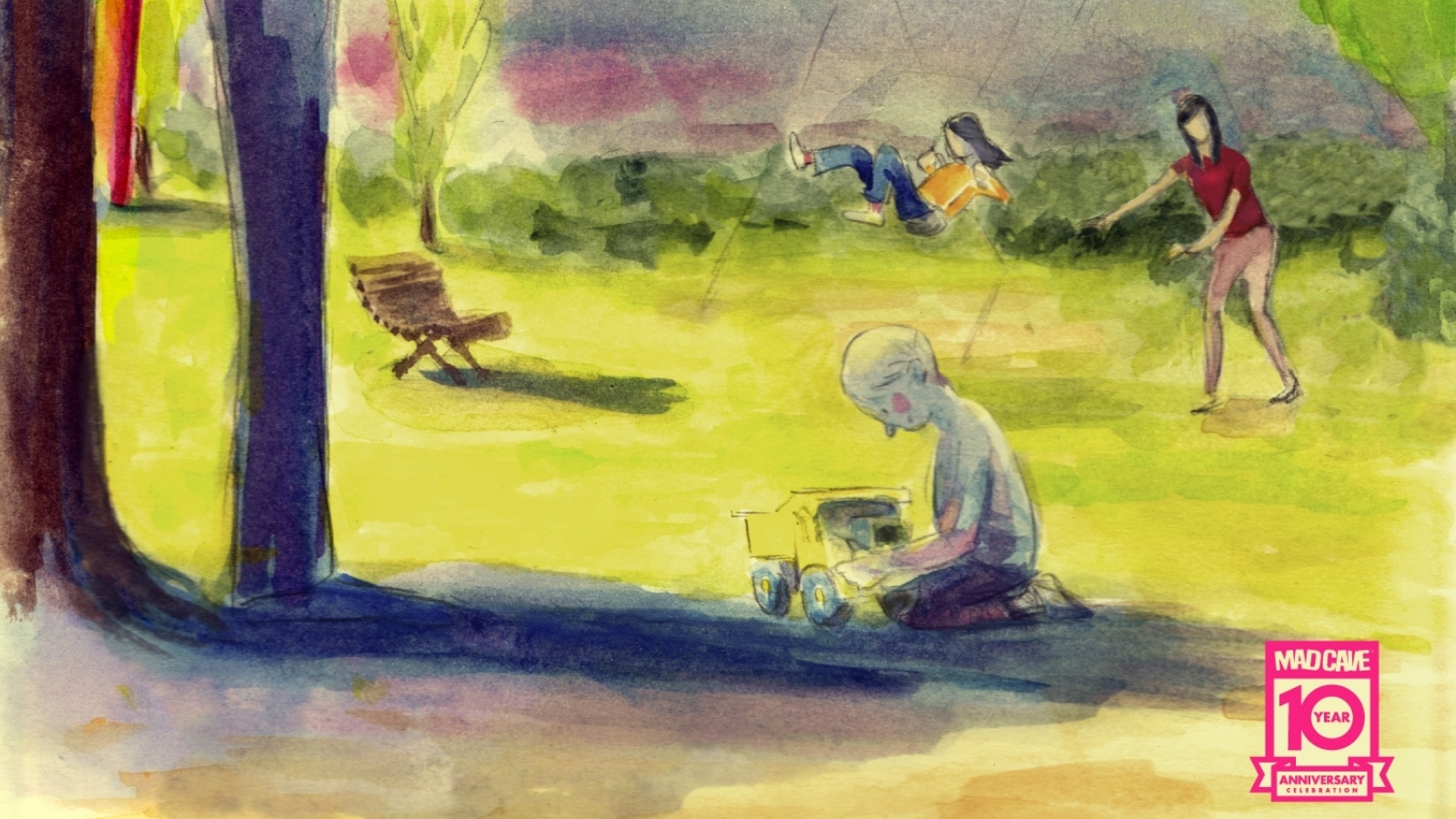
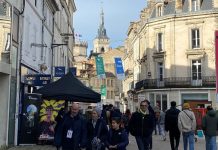
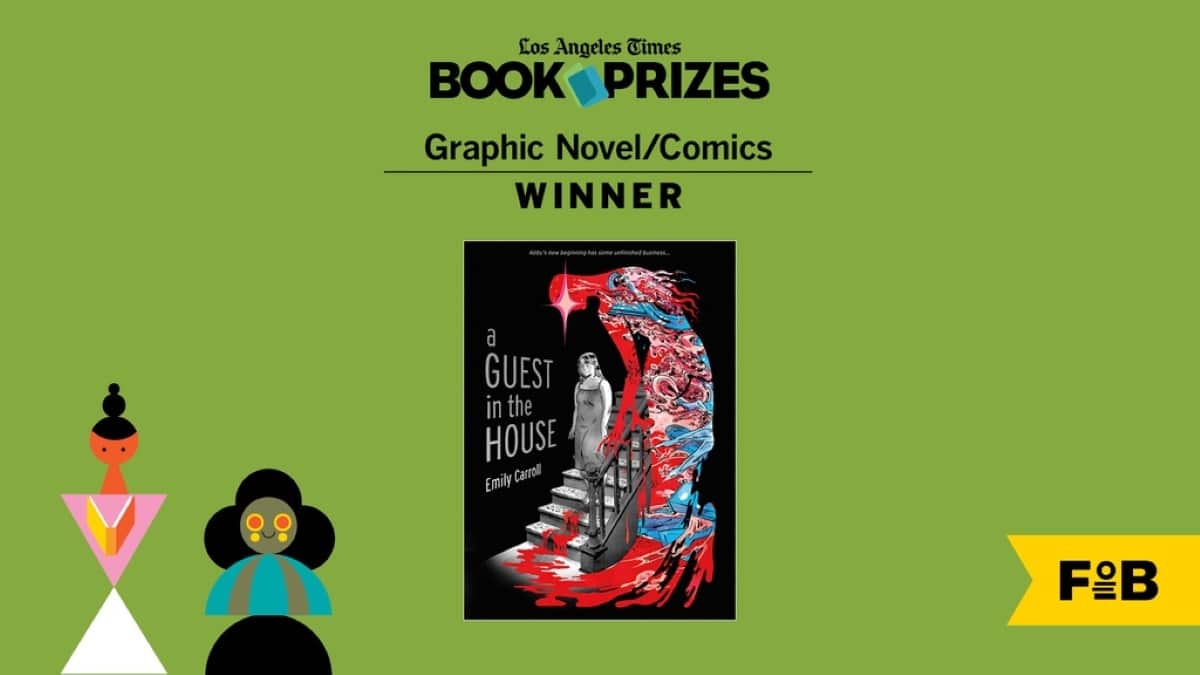

This is all nice and rosy. I was there this time like many times before and it would be interesting to offer a counterpoint, the other side of the coin, everyone’s stories from hell, over 50 years would make for a thrilling read, from political intrigues to logistical nightmare, there is so much to tell.
Comments are closed.